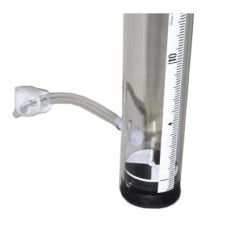Sondes et accessoires
Sondes et accessoires de turbidimètres pour analyse de l'eau en l'environnement. Découvrez nos produits de Observator Instruments, Global Water et Wildco .
Voir 1 à 3 sur 3 (1 Pages)
Sondes et accessoires de turbidimètres pour analyse de l'eau en l'environnement. Découvrez nos produits de Observator Instruments, Global Water et Wildco .


